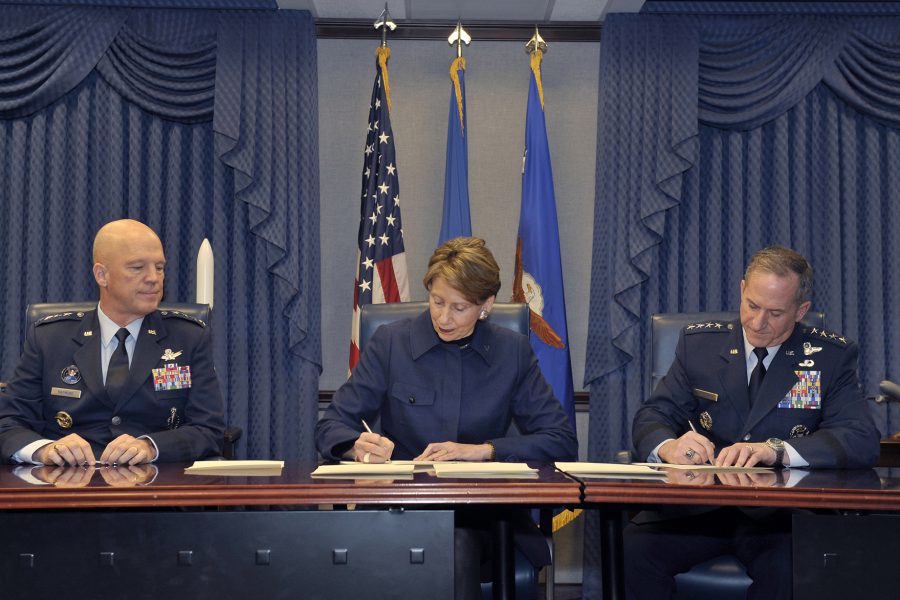The Air Force’s unique “pass-through” budget mechanism, which inflates the apparent size of the service’s budget with monies that aren’t actually under its control, may become the core of the new Space Force’s budget, Air Force Secretary Barbara Barrett reported.
Barrett, in a Jan. 30 interview with Air Force Magazine, said giving the pass-through account to Space Force is “one of the ideas” being evaluated as the new service’s budget is shaped for the first time.
The notion that the services each get 30 percent of the Pentagon budget, and the remaining 10 percent goes to defense agencies, is one of those “old constructs that have become chiseled in granite, … sacrosanct,” Barrett said, and the idea that the “Air Force covers ‘pass-through’” is among them.
Such thinking is “reflective of a World War II mindset, or even a Civil War mindset,” she said. But, “the world has changed” and there is recognition that space is a domain “of paramount importance.” Consequently, there is a dedicated scrutiny underway of how “we structure” the Space Force budget.
Solutions need to be what Defense Secretary Mark Esper, a former Army Secretary, “will find equitable,” Barrett said. “He needs to be persuaded on these,” she added.
Asked if she has specifically discussed the pass-through issue with Esper, Barret jokingly replied, “not since 10 o’clock this morning.”
The pass-through budget, sometimes referred to as the “non-blue budget,” is largely classified, but typically funds space-related programs. For fiscal 2020, the Air Force budget request was $204.8 billion, but only $165.6 billion of that was actually “blue,” or USAF-controlled funds. The remaining $39.2 billion went to other projects in the pass-through account. Those not aware of the pass-through idiosyncrasy would be confused into thinking the Air Force’s budget is about 20 percent larger than it actually is, because it’s counted as part of USAF’s “topline.”

Of the $39.2 billion in pass-through monies, some $22.4 billion was to be spent on procurement, while $10.6 billion would cover research and development. By contrast, the Air Force’s own procurement budget was just $27.4 billion.
Asked if she thinks the environment is ripe to eliminate the pass-through issue, Barrett said “there are antibodies to any change. And I’m conscious that any change will receive pushback.” Opponents of doing things differently may be “protecting their rice bowl,” she observed.
Ellen Lord, Pentagon acquisition and sustainment chief, told reporters on Jan. 14 “the entire structure” of Air Force and Space Force budgeting was under review, including the pass-through quirk.
“We are doing a wholesale look at the entire system,” Lord reported, “from resourcing to staffing. … Everything is on the table.”
The Mitchell Institute for Aerospace Studies recently published a paper titled, “Moving Toward the Air Force We Need? Assessing Air Force Budget Trends,” in which it described the damaging effects of using the Air Force as a conduit for program monies it doesn’t control.
“A myth exists that the Air Force is funded equally with the other services. Analysis shows that DOD only allocates 23 percent of the defense budget to the Air Force’s “blue” budget, which excludes pass-through funding for programs that the service does not control (mostly national intelligence-related programs),” states the report. “An assessment of budget trends reveals the nation has dramatically underfunded the Air Force, especially when compared to the other services.”
For more from Air Force Magazine’s Q&A with Barrett, check out the March issue of the print magazine.


